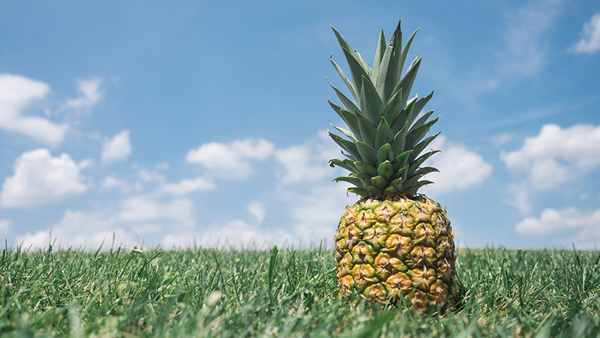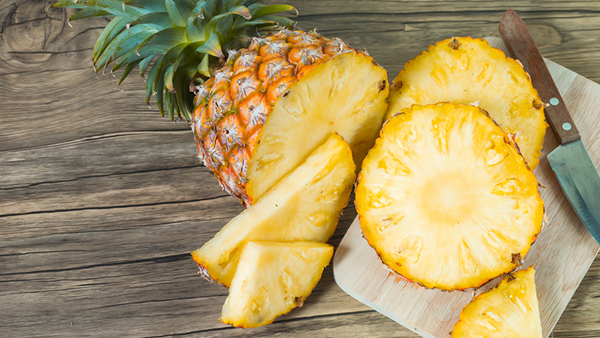Yates Account
Join now
Create a Yates account today!
Sign up to join the Yates Garden Club for monthly e-mails packed with seasonal inspiration, tips for success & exclusive promotions.
Plus if you’re a Garden Club member you can take part in the Yates Growing Community - a blog to share successes, get advice & win prizes in fun challenges along the way!

Forgot password
Enter the email address associated with your account, and we'll email you a new password.

How to grow Pineapples in a garden
- Choose a sunny spot with well drained soil. Enrich the soil with Yates Dynamic Lifter Organic Plant Food. If the soil is clay based, improve soil structure by adding gypsum and forking in well. In poorly drained areas, pineapples can also be planted in a raised mound of coarse free-draining soil.
- Dig the planting hole twice as wide and to the same depth as the root-ball.
- Remove the plant from the container, position in hole, backfill with soil, gently firming down. Form a raised doughnut shaped ring of soil around the outer edge of the plant's root zone. This helps keep water where it's needed. Always water in well after planting to settle the soil around the roots and keep the soil moist for several weeks while the new plant establishes.
- Mulch around the base with organic mulch like woodchip or pea straw, keeping it away from the base of the plant.
- Water deeply, once or twice a week, depending on weather conditions.
- During the growing and flowering/fruiting season, feed with Yates Thrive Citrus & Fruit Granular Plant Food. TIP: for an added boost during the flowering/fruiting season, apply Yates Thrive Citrus Liquid Plant Food.


How to grow Pineapples in a pot
Pineapples make wonderful pot specimens, so they’re perfect for small spaces or even a balcony. You can also bring them indoors to help liven up your space. Look for the ‘Dwarf Pineapple’ which produces small sweet fruit.
- Choose a pot at least 450mm wide. Position in full sun and fill with quality potting mix, such as Yates Premium Potting Mix.
- Remove the plant from the container, position in hole and backfill with potting mix, gently firming down. Water in well.
- Water deeply, 2-3 times during the week, depending on weather conditions.
- During the growing and flowering/fruiting season, feed weekly with Yates Thrive Citrus Liquid Plant Food. Throughout the year apply Yates Thrive Fish Blood & Bone Plant Food Concentrate.
How to grow Pineapples from a store-bought fruit
Did you know - the top of the pineapple you buy from the supermarket can be used to grow another pineapple plant. What a bonus!
- Purchase a whole ripe pineapple that has its leafy crown still attached to the fruit.
- Using a sharp knife, remove the crown from the fruit and remove all fruit flesh from the top.
- Remove the bottom leaves to help expose the stalk of the crown, then, let dry for a week in a cool dry spot.
- Fill a pot with Yates Black Magic Seed Raising Mix leaving a hole in the centre.
- Plant the top into the centre of the pot, backfill and water in well.
- Position in bright, indirect light and keep the soil moist until roots develop.
- After 6-8 weeks, or once roots are well developed, plant them in the ground or pot as per instructions above.
Growing tips
-
Growing pineapples requires patience as a young or new plant can take up to 2-3 years to produce fruit.
- Pick and eat only when ripe (golden yellow or orange colour) as green immature pineapples are toxic. If you have rats/mice who like to steal from your garden, cut when the pineapple just starts to turn yellow, then leave inside for a few days to allow it to ripen. Otherwise, use a netting/wire-mesh and framework to protect your produce.
- Break off any baby plants or ‘pups’ from the mother plant and replant into a pot filled with Yates Black Magic Seed Raising Mix. Use the same technique as described in the above section 'How to grow Pineapples from a store-bought fruit'.
















Share
Share this article on social media